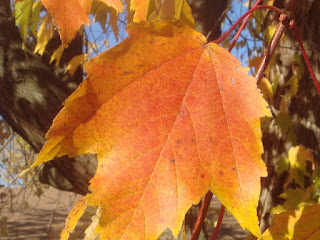Hello!
Here's what we've been working on in room 303 this week:
Language Arts - We started new word study sorts this week. Students have two weeks to work with these words before they will be quizzed on them (next Friday). We also continued to improve our language arts rotations. There are three book groups going on in my room (
Tornado,
Pippi Longstocking, and
Frindle), and one going on in Mrs. Dettmann's room (
The Family Under the Bridge). We're developing a sense of independence and responsibility for completing one's work. I'm personally really enjoying the fact that I'm able to meet with small groups of kids and listen to them read, ask them questions about their books, and share in the excitement of reading new stories!
Being a Writer - This week we learned about acrostic poems. The class read the book,
Silver Seeds, which is a book full of nature words that the authors (Paul Paolilli & Dan Brewer) have turned into acrostic poems. Each letter of the word begins a new line, and all of the lines in the poem are supposed to describe the word in some fashion. For example, for the word "SUN", the poem reads: "
Sliding through the window,/
Underneath the door,/
Nudging us out to play." Students had the opportunity to create their own poems, in addition to having time to work on other stories in their writing journals.
 |
| This book showed us how cool acrostic poems can be! |
Social Studies - We successfully completed our study of Maps and Globes this week! Today we took the quiz, which asked students to show what they know about the 7 continents (can you find them on a map?), 5 oceans (wait...there's a southern ocean?), and other geographic vocabulary words and concepts. We learned about map legends, symbols, directions, coordinates and more! We even created motions to our very own game of Simon Says! Thanks for all you do at home to encourage geographic literacy.
 |
| This is a map of the earth at night. Can you locate the continents? The oceans? |
Read Aloud - Currently, we are nearly 2/3 of the way through the book,
The Indian in the Cupboard, by Lynn Reid Banks. We are at a suspenseful part of the story where Omri and Patrick are looking for the missing key to the cupboard. Yesterday we talked about the word "
sieve" since it came up in the story. Students discovered the word was similar to "
strainer" and "
colander", or something that one might use to separate small things (or liquid) from big things. Each day we're trying to find new and unfamiliar words that we can all learn.
 |
| Sieve- a utensil consisting of a wire or plastic mesh held in a frame, used for straining solids from liquids, for separating coarser from finer particles, or for reducing soft solids to a pulp. (Definition according to Google) |
Math - This week, we continued to work on rounding numbers to the nearest ten, hundred, and thousand. We practiced this by playing a game called "Round it!" The game involves flipping over 4 digit cards, arranging them into a 4-digit number (e.g. 4,582), and then rolling special dice (labeled with 10, 100, and 1,000). Depending on the roll, students would round their number to the nearest ten, hundred, or thousand. In general, most kids are able to round to the first digit (thousands place), however, things are slightly more difficult when rounding a 4-digit number to the nearest hundred or ten. Common mistakes are: leaving off part of the number (4,
582 rounding to 600), rounding to the wrong place (4,
582 rounding to 5,000 or 4,580...both correct answers but for different places), and just not knowing or being able to visualize the number line when getting specific with large numbers (which just takes more exposure to, and practice with, numbers up to 9,999).
We also experimented with a review game called "Sink or Swim". It's an attempt to review math concepts in a setting that emphasizes teamwork (students are grouped in teams and encouraged to collaborate), sharing mathematical thinking (a spokesperson is selected to present answers), good-natured competition, and fun! Ask your child to find out more...
 |
| Poseidon traded in his trident for a beach ball for our game of "Sink or Swim". |
In general, it's clear to me that we're making great progress each week. Our classroom community has developed to the point where people are getting comfortable and the expectations are known. I'm already looking forward to next week!
Thanks for reading!
- Mr. B
P.S. Thanks to all of the parents and friends who came early to school this morning to decorate our sidewalks with positive chalk messages. It made for a great day!






